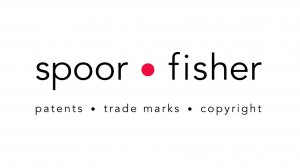An appeal by the Foschini Group (“Foschini”) – the proprietor in South Africa of the trade mark DUE SOUTH (word mark) in various classes – to overturn a decision by the Registrar of Trade Marks to accept applications by Jan Frederick Coetzee (“Coetzee”) for registration of the trade mark DUE-SOUTH & DEVICE in classes 16, 29, 30 and 41 (the DUE-SOUTH LOGO marks) was recently dismissed by the North Gauteng High Court on the basis that the goods and/or services in respect of which registration of the DUE-SOUTH LOGO marks was sought were not similar to those in respect of which Foschini’s DUE SOUTH trade marks were registered.
Foschini’s DUE SOUTH trade marks are used in respect of a chain of upmarket retail outlets which cater to outdoor and adventure enthusiasts. At the time of Foschini’s opposition, there were 21 stores across South Africa operating under the DUE SOUTH name.
Coetzee operates a single arts and crafts shop which promotes indigenous South African arts and crafts. A primary focus of Coetzee’s shop was identifying the majority of craft projects and cultural tourism points in South Africa, which also involved the publication of a series of travel guides and provincial route maps. His applications were for the logo (depicted below) used in connection with his shop.
Foschini’s opposition was based on its registrations in classes 8, 9, 11, 21, 28 and 35 and section 10(14) of the Trade Marks Act 194 of 1993 (“the Act”), which provides inter alia that a mark shall not be registered if it is “…identical to a registered trade mark belonging to a different proprietor or so similar thereto that the use thereof in relation to goods or services in respect of which it is sought to be registered and which are the same as or similar to the goods or services in respect of which such trade mark is registered, would be likely to deceive or cause confusion…” (emphasis added).
Foschini argued that the DUE-SOUTH LOGO marks were highly similar to its registered DUE SOUTH trade marks and, accordingly, the degree of similarity between the respective goods and/or services need be far less than if the respective marks had been less similar. Counsel for Foschini submitted that proof of “some similarity” between the respective goods and/or services should be sufficient to succeed in showing a likelihood of deception or confusion as required by section 10(14).
Coetzee countered Foschini’s argument with reference to the trade mark classification system, which he argued had been put in place to permit similar (or even identical) trade marks to exist and be used in relation to different goods and/or services by different proprietors. The starting point, Coetzee argued, should be the classification system itself and the fact that the goods and/or services are in different classes would indicate, at least prima facie, that the goods and services are not similar.
The court reiterated the importance of the classification system and the importance of only claiming protection in classes in which the applicant actually intends to function. This, it found, was a necessary limitation on the anti-competitive practice of trade mark registration and to ignore this would result in the trade mark owner enjoying an unreasonably wide monopoly.
In light of the above, the court found that it must proceed from the premise that “one can not lightly find similarity”.
In considering the similarity of the goods and/or services, the court applied the test formulated in Adcock Ingram v Cipla Medpro 2012 (4) SA 238 (SCA) (29 March 2012) finding that it is not what the applicant for registration (Coetzee) is doing or what he says he intends doing, but what he will be permitted to do if the application is granted in respect of all the goods in the classes applied for.
In considering whether the goods and/or services in respect of which Foschini’s marks were registered were similar to those in respect of which Coetzee sought registration of the DUE-SOUTH LOGO marks, the court drew comparisons between the various goods and/or services. One such comparison was between the goods in classes 29 and 30 (food classes) and Foschini’s class 8, 11 and 21 registrations. The court found that “[h]ow tools and apparatus for cooking, kitchen utensils, containers, glassware, porcelain and earthenware can be regarded as similar to food, is beyond me”.
The court also found, when comparing class 9 (“…teaching apparatus and instruments…”) to class 41 (“education, providing of training…”) that “you cannot compare the production and sale of articles to be used in some activity to the service rendered by using those good”.
These findings, which have raised the bar when it comes to proving similarity between goods and/or services come soon after the ruling in Mettenheimer & Another v Zonquasdrif Vineyards CC & Another (18998/2010) [2012] ZAWCHC 69 (13 June 2012), in which it was held that grapes (class 31) are not similar to wine (class 33) for the purposes of establishing a likelihood of deception or confusion in infringement proceedings in terms of section 34(1)(b) of the Act.
Both the Zonquasdrif and the Due South judgments are apparently under appeal.
Written by Eben van Wyk, partner, & John Foster, associate, at intellectual property law firm Spoor & Fisher
EMAIL THIS ARTICLE SAVE THIS ARTICLE
To subscribe email subscriptions@creamermedia.co.za or click here
To advertise email advertising@creamermedia.co.za or click here











